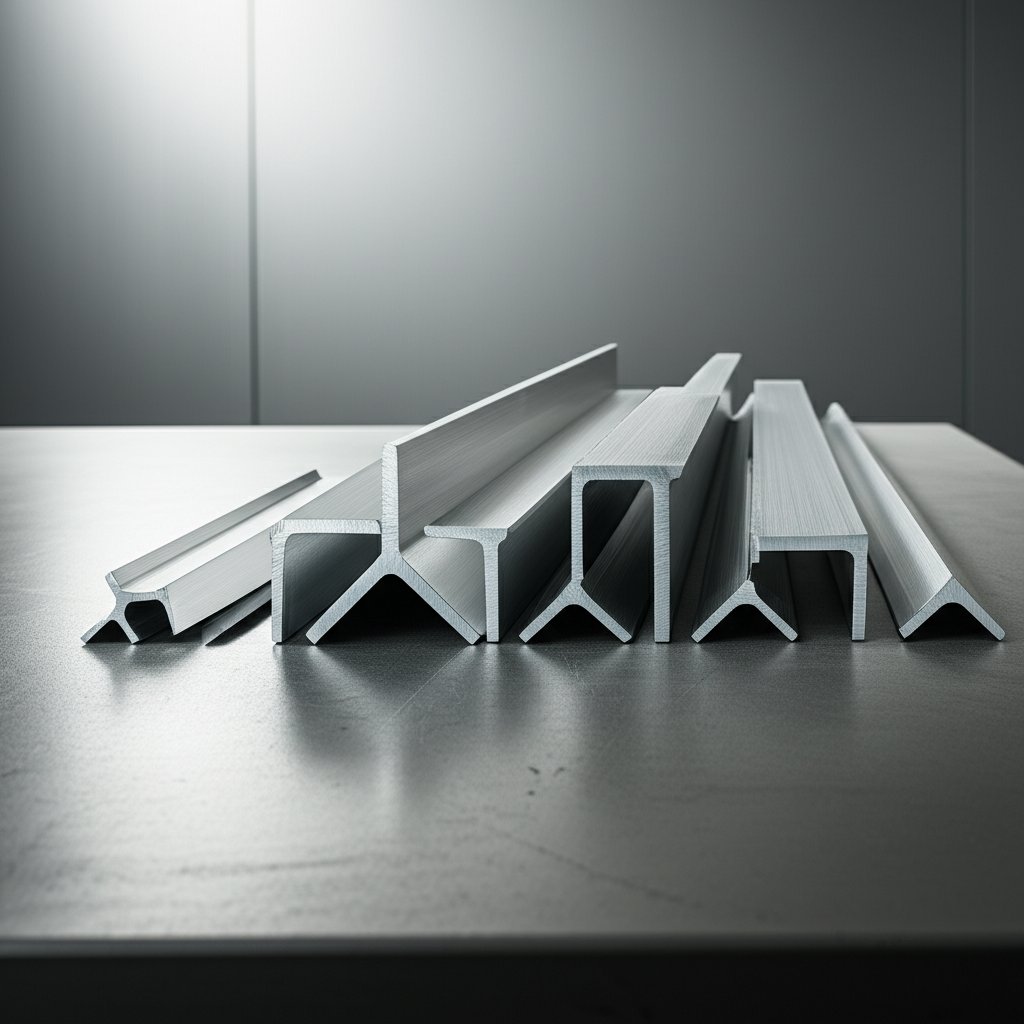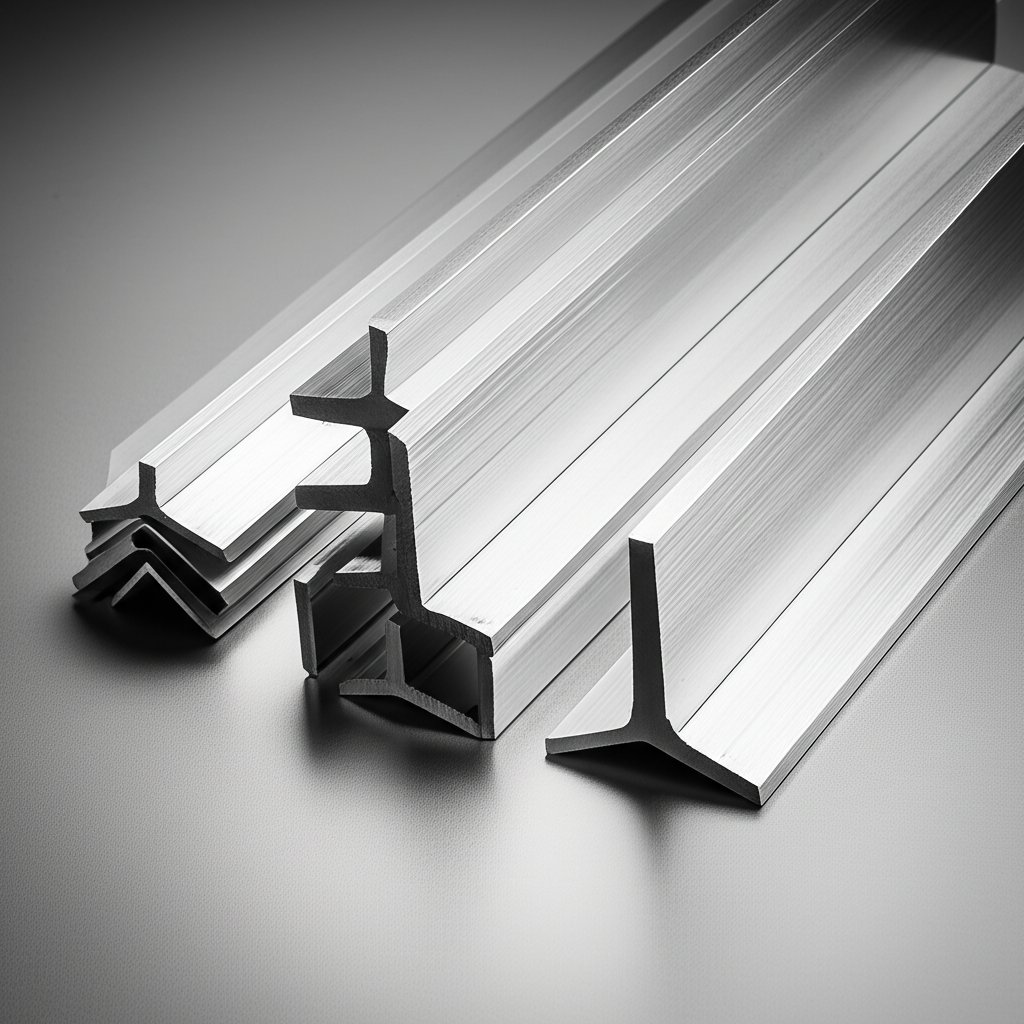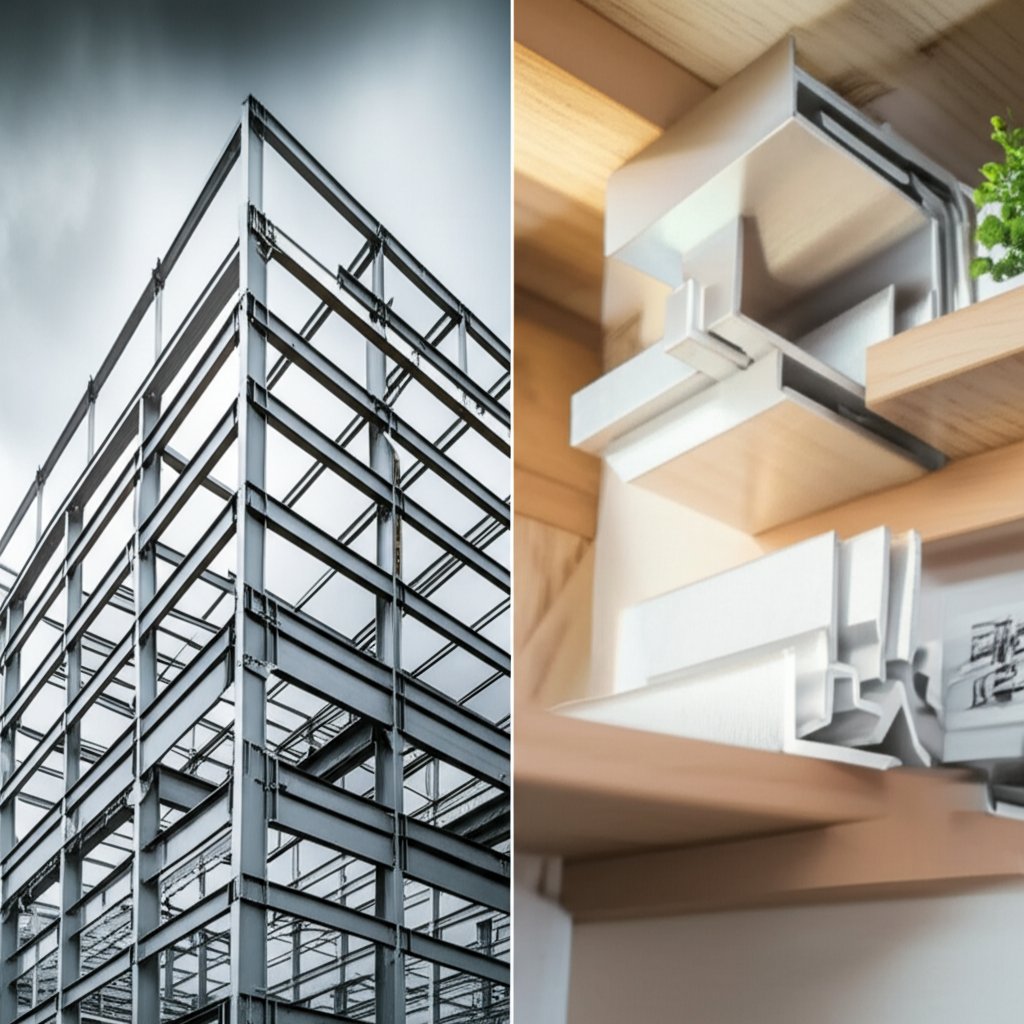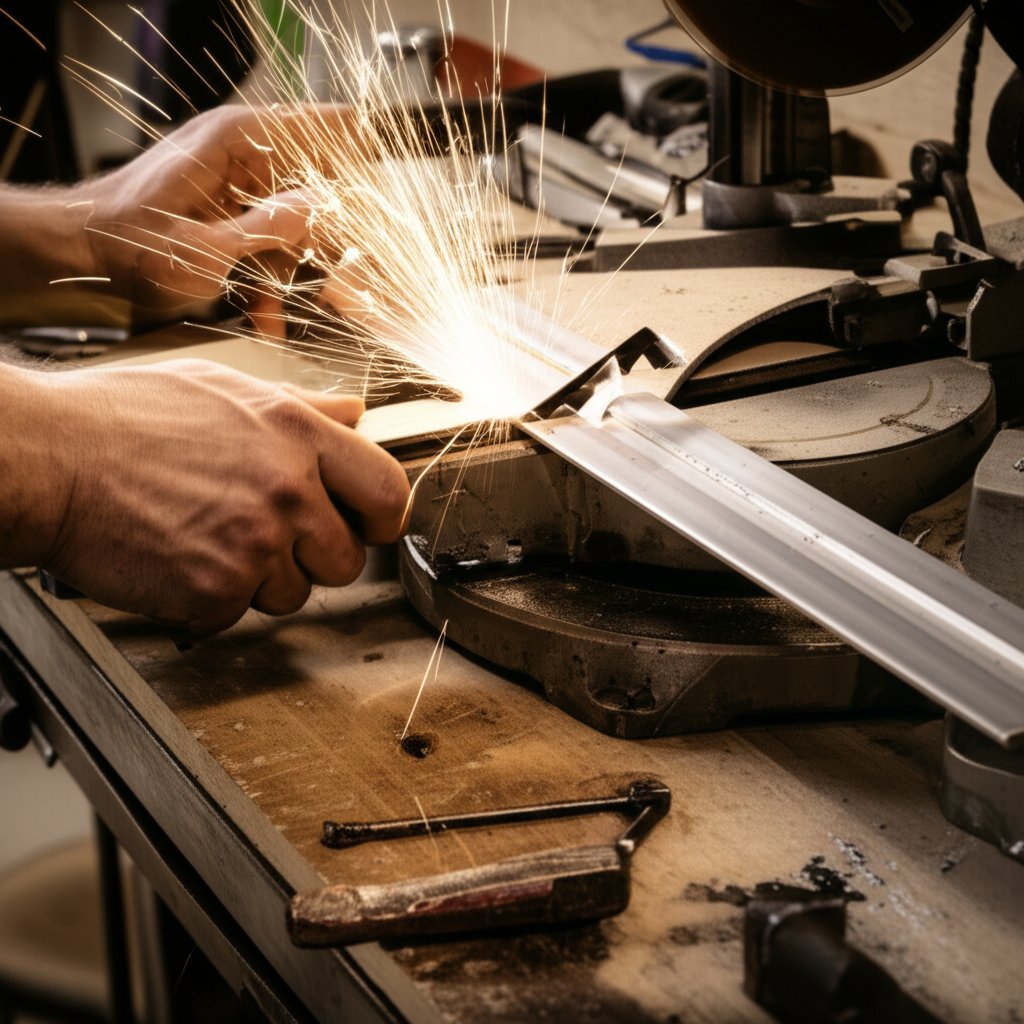
When you step into a construction site, peek inside a piece of machinery, or even browse a home improvement aisle, you’ll notice a simple L-shaped metal profile showing up everywhere. That’s the aluminum angle—a workhorse of modern engineering and design. But what exactly is it, and why has it become so indispensable?
Aluminum angle, sometimes called angle aluminum or aluminum angle metal, is an extruded profile shaped into a precise 90-degree "L." Each leg of the angle can be equal or unequal in length, allowing for a broad range of structural and decorative uses. Imagine framing a window, reinforcing a shelf, or building lightweight supports: these are just a few scenarios where aluminum angles shine. Their geometry provides excellent rigidity and support, making them a go-to component in both industrial and DIY projects.
Whether used as a structural brace, a trim edge, or a framework, these profiles adapt to countless needs.
So, what makes aluminum the preferred material for these angles? The answer lies in its unique combination of benefits:
These properties make aluminum angles not only durable and long-lasting, but also cost-effective and environmentally friendly, as aluminum is highly recyclable.
In this guide, you’ll discover everything you need to know about aluminum angles: how to read their sizes and specs, how to choose the right alloy, their most common applications, and practical tips for fabrication and finishing. Whether you’re a builder, designer, or curious DIYer, this comprehensive resource will help you make informed choices for your next project.

Ever stared at a list of aluminum angle sizes and wondered, “What do all those numbers mean?” If you’ve found yourself confused by terms like leg length, thickness, or radius, you’re not alone. Understanding these specifications is the first step to choosing the perfect angle for your project—whether you’re building a heavy-duty frame or adding a subtle trim detail.
When you see a specification like "2x2x1/8" or "3x3x1/4," it’s describing three key measurements for an aluminum angle:
For example, a 2x2 aluminum angle with a 1/8" thickness means both legs are 2 inches long and the metal is 1/8 inch thick. If you see a 1 1 2 aluminum angle (1-1/2" x 1-1/2"), you’re looking at a profile ideal for lighter structural or decorative work. The 3x3 aluminum angle is often used for larger frameworks, where greater strength is needed.
But how do these specs relate to real-world performance? The longer and thicker the legs, the more weight the angle can support—but it will also be heavier and may require more effort to cut or drill. The inside radius, while subtle, can also affect how the angle fits into corners or aligns with other materials.
To make your decision easier, here’s a table of popular aluminum angle sizes, their typical thicknesses, and common applications. This can help you visualize which profile fits your needs best:
| Size (inches) | Thickness (inches) | Weight (lb/ft) | Typical Applications |
|---|---|---|---|
| 1 x 1 | 1/8, 3/16, 1/4 | 0.277–0.515 | Light frames, trim, edge protection, small brackets |
| 1-1/2 x 1-1/2 | 1/8, 3/16, 1/4 | 0.424–0.809 | Shelving supports, medium-duty frames, window/door reinforcement |
| 2 x 2 | 1/8, 3/16, 1/4, 5/16, 3/8 | 0.578–1.607 | Structural bracing, equipment frames, outdoor railings |
| 2-1/2 x 2-1/2 | 3/16, 1/4, 5/16, 3/8 | 1.069–2.048 | Heavy shelving, machinery bases, industrial racks |
| 3 x 3 | 3/16, 1/4, 5/16, 3/8, 1/2 | 1.275–3.227 | Large frames, heavy-duty supports, construction beams |
| 4 x 4 | 1/4, 3/8, 1/2 | 2.282–4.414 | Industrial bracing, building structures, marine projects |
Understanding aluminum angle sizes empowers you to balance strength, weight, and appearance for your unique application. Next, we’ll explore how alloy selection—like 6061 versus 6063—can further fine-tune your project’s performance and longevity.
When you’re selecting aluminum angle stock for your next project, you’ll quickly encounter two popular alloy options: 6061-T6 and 6063-T5. But which one is right for your needs? The answer depends on how you plan to use the material—whether you’re building a heavy-duty frame or designing a sleek trim. Let’s break down what sets these alloys apart so you can make an informed decision.
Imagine you’re constructing an industrial frame, a trailer, or a piece of machinery that must withstand substantial loads. This is where 6061-T6 shines. Often referred to as the “workhorse” of heat-treated aluminum alloys, 6061-T6 is prized for its impressive strength, durability, and versatility in fabrication.
Typical uses for 6061-T6 include heavy-duty supports, load-bearing frameworks, and components that require frequent machining or modification.
Now, picture a project where appearance and formability are just as important as strength—think window frames, decorative trim, or railing systems. 6063-T5 is the alloy of choice in these scenarios. Known for its superior finish quality and ease of forming, 6063-T5 is often called the “architectural alloy.”
6063-T5 is commonly found in architectural angles, window frames, and trim pieces where aesthetics and smooth edges are a must.
| Property | 6061-T6 | 6063-T5/T6 |
|---|---|---|
| Tensile Strength (psi) | 42,000 | 25,000 |
| Yield Strength (psi) | 35,000 | 25,000 |
| Corrosion Resistance | Good | Good |
| Formability | Fair | Excellent |
| Weldability | Excellent | Excellent |
| Finish Quality | Good | Excellent |
| Typical Use | Structural, load-bearing, industrial | Architectural, decorative, trim |
Choosing the right alloy is the most critical decision for ensuring the long-term performance and safety of your project.
While both alloys offer excellent corrosion resistance and weldability, the differences in strength and finish quality can make a significant impact on your project’s outcome. Consider the specific requirements—load, appearance, fabrication process—before making your selection.
With the right alloy chosen, you’re ready to explore the many ways aluminum angles can be put to work. Next, let’s look at the wide range of applications for these versatile profiles, from heavy-duty construction to creative DIY projects.

Ever wondered why aluminum angle iron seems to pop up in everything from skyscraper frameworks to custom-built furniture? The answer is simple: this L-shaped profile offers a rare blend of strength, lightness, and workability that makes it indispensable for both professionals and DIYers. Whether you’re looking for robust support in a construction project or a sleek accent for your next creative build, there’s an aluminum angle solution ready to fit your needs.
When it comes to load-bearing strength and reliable support, aluminum angle bar is a top choice across a range of industries. Its rigid geometry and corrosion-resistant properties make it ideal for demanding structural applications where performance matters.
Case Study: In a recent warehouse renovation, a contractor used 3x3 aluminum angle iron to retrofit existing wooden shelves. The result? Increased load capacity and a dramatic reduction in long-term maintenance, thanks to aluminum’s durability and rust resistance.
Think aluminum angles are only for heavy lifting? Think again. Their clean lines, modern finish, and easy workability make them a favorite for architects, designers, and home improvement enthusiasts alike.
Project Example: A DIY enthusiast transformed a cluttered garage into an organized workspace by building a set of modular shelves using aluminum angle bar and plywood. The result was a durable, rust-free storage solution that’s easy to reconfigure as needs change.
In both heavy-duty and decorative roles, aluminum angles deliver unmatched versatility. Their ability to bridge the gap between structural integrity and design flexibility is what sets them apart. As you consider your next project—whether it’s a major construction job or a weekend DIY upgrade—think about how these adaptable profiles can bring your vision to life. Up next, we’ll compare aluminum angles to their steel counterparts, helping you choose the right material for your unique requirements.
When you’re planning your next build, the choice between aluminum angle and steel angle can seem overwhelming. Do you go for the lightweight, corrosion-resistant qualities of aluminum, or the brute strength of steel? Let’s break down the essential differences so you can confidently select the best material for your needs—whether you’re considering a 2 aluminum angle for a lightweight frame or a 3 aluminum angle for heavy-duty bracing.
Aluminum angle profiles are prized for their lightness, ease of handling, and resistance to rust—even in harsh outdoor or marine environments. Imagine building a boat dock, a garden structure, or a transport frame: using a 2 inch aluminum angle here means less weight to support, easier installation, and long-term durability with minimal maintenance. Here’s why many builders and DIYers reach for aluminum first:
For example, a 1 aluminum angle is often used for trim, edge protection, or lightweight frameworks where aesthetics and corrosion resistance matter just as much as strength.
Steel angle, on the other hand, is the go-to choice when maximum strength and load-bearing capacity are non-negotiable. Think of industrial shelving, building frameworks, or machinery mounts—places where a 3 aluminum angle might not offer enough structural support. Steel’s higher density and tensile strength mean it can handle bigger loads, but it comes with a few trade-offs:
If you’re building a warehouse mezzanine or an industrial support frame, steel angle is often the safest bet for peace of mind and longevity—provided you’re prepared to manage the extra weight and rust protection.
| Property | Aluminum Angle | Steel Angle |
|---|---|---|
| Weight | Very light (about 1/3 the weight of steel) | Heavy—requires more support |
| Strength-to-Weight Ratio | High for its weight; best for moderate loads | Exceptionally high—ideal for heavy loads |
| Corrosion Resistance | Excellent—naturally resists rust | Poor unless coated or galvanized |
| Cost | Higher initial cost; better long-term value in harsh environments | Lower upfront cost; may need more maintenance |
| Ease of Fabrication | Easy—cuts and drills with standard tools | Requires tougher tools and more effort |
Still not sure? Think about your project’s environment, load requirements, and maintenance expectations. Need a specific aluminum angle size? Explore custom L-shaped aluminum profiles for exact dimensions like 1", 2", or 3" angles: High-Quality Custom Size L-Shape Aluminium Angle.
Up next, we’ll walk through practical fabrication tips so you can get the best results from your chosen material—whether it’s a 2 inch aluminum angle for a sleek build or a steel angle for industrial strength.

Ever wondered how professionals achieve those crisp corners, smooth holes, and custom bends in aluminum angle profiles? Whether you’re tackling a 1 4 aluminum angle for a heavy-duty bracket or shaping a sleek black aluminum angle for a modern project, the right fabrication approach makes all the difference. Sounds complex? Don’t worry—this hands-on guide breaks down each step so you can confidently work with aluminum angle, from cutting and drilling to bending for that perfect custom inside radius.
When you need to cut aluminum angle—be it a 1 2 aluminum angle for a shelf support or a thick 1/4" profile for structural bracing—the right tools and techniques ensure clean results and minimal frustration.
Need a custom fit or a gentle curve—like an aluminum angle custom inside radius for a unique frame? Bending aluminum angle is possible, but requires patience and the right approach:
Imagine building a custom bracket for a shelving system or creating a unique architectural detail—these fabrication steps let you tailor aluminum angles to fit any vision. Mastering these basics not only gives your projects a professional edge but also opens up new creative possibilities. Next, we’ll explore finishing and protecting your aluminum angle to ensure it stands the test of time, indoors or out.
When you pick up an aluminum angle from a local supplier—maybe at an aluminum angle Home Depot or Lowes aluminum angle aisle—have you ever wondered why some pieces have a brilliant sheen, while others boast a tough, colored surface? The secret lies in the finishing process. Choosing the right surface treatment isn’t just about looks; it’s about safeguarding your investment from corrosion, wear, and the elements—especially if your project will face outdoor or high-traffic conditions. Let’s break down the most popular finishing options and help you choose the best protection for your needs.
Sounds complex? Not at all. Anodizing is an electrochemical process that thickens the natural oxide layer on aluminum, making it far more resistant to wear and corrosion. Picture an angle aluminum home depot profile with a rich metallic luster—that’s often the result of anodizing. This finish is not only durable, but it also allows for a wide range of color options, from subtle silvers to vibrant hues, making it a favorite for both architectural and structural applications.
If you want a tough, uniform surface with nearly endless color and texture choices, powder coating is a top contender. Imagine a home depot aluminum angle with a bold matte black or glossy red finish—that’s powder coating at work. This process uses charged powder particles melted onto the aluminum, producing a thick, durable layer that stands up to harsh weather and abrasion. It’s a go-to for outdoor furniture, railings, and architectural accents.
For quick updates or budget-friendly projects, painting remains a practical option. Whether you’re refreshing a trim piece or matching existing décor, modern liquid paints provide smooth finishes and a spectrum of colors. Painting is especially handy for small runs or DIY jobs, and is often used for interior trim, edge protection, or when you want to easily change the look down the road.
Once your aluminum angle is finished, proper care is key to long-term performance—especially outdoors. Here are a few practical tips:
By selecting the right finish and following these simple care steps, you’ll ensure your aluminum angle remains attractive and resilient for years to come—whether it’s accenting a modern home or standing up to the elements outside. Next, we’ll guide you through how to source high-quality aluminum profiles for your next project, ensuring you get the performance and consistency your application demands.
Ever searched for "aluminum angle near me" or scrolled through endless options for aluminum angle stock online? With so many sources available, how do you ensure you’re getting consistent quality and the right material for your project? Choosing the right supplier isn’t just about finding the lowest price—it’s about securing peace of mind, precise specs, and long-term performance. Here’s how to make a smart, informed decision.
For demanding projects—like architectural builds, industrial frameworks, or custom fabrication—working directly with a dedicated manufacturer is often the best route. Manufacturers with advanced extrusion lines and in-house quality control can deliver:
Imagine needing a batch of aluminum angle with tight tolerances for a high-visibility architectural project. A specialist manufacturer can guarantee both the material and the finish, providing the assurance you won’t get from general retailers or bulk suppliers.
For professional aluminum solutions, it’s smart to consult with a proven industry leader. Shengxin is a professional aluminum profile manufacturer in China, offering certified materials, expert guidance, and custom extrusion capabilities for projects of any size. Their team can help you source the right aluminum angle—ensuring your next build is both reliable and efficient.
Aluminum angle is widely used in construction for framing, bracing, and supports, as well as in DIY projects for shelving, trim, and custom frames. Its light weight and corrosion resistance make it ideal for both structural and decorative applications indoors and outdoors.
Select the size based on your load requirements and installation space—larger, thicker angles support more weight. For alloys, 6061-T6 is best for structural strength, while 6063-T5 is preferred for architectural and decorative projects due to its smooth finish and superior formability.
Aluminum angles can be finished with anodizing for enhanced durability and color, powder coating for a tough, colorful surface, or painting for an affordable, customizable look. The right finish depends on your durability, appearance, and maintenance needs.
Aluminum angle is much lighter, naturally corrosion-resistant, and easier to fabricate than steel, making it suitable for environments where weight and rust are concerns. Steel angle, however, offers greater load-bearing strength and is often chosen for heavy-duty, industrial applications.
For certified, custom, or large-scale requirements, partnering with a professional manufacturer like Shengxin ensures consistent quality, alloy certification, and expert guidance for your project. Local hardware stores and online suppliers also offer standard sizes for general use.
 dịch vụ trực tuyến
dịch vụ trực tuyến 0086 136 3563 2360
0086 136 3563 2360 sales@sxalu.com
sales@sxalu.com +86 136 3563 2360
+86 136 3563 2360